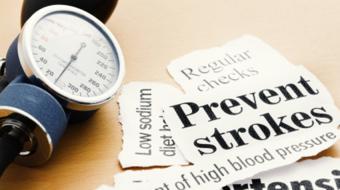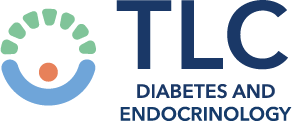Chronic Disease Education
Acute Condition Education
Working with your Family Physician
Working with Allied Care Providers
Neurology of a Stroke

Knowledge is Power.
True/False - Quiz: Do You Understand the Neurology of a Stroke?
Information - Neurology of a Stroke
 A stroke is caused by a reduction or interruption of the blood supply to a part of the brain. The brain tissue is deprived of nutrients and oxygen, and brain cells start dying within minutes. A stroke may be caused by a blocked artery or the leaking or bursting of a blood vessel.
A stroke is caused by a reduction or interruption of the blood supply to a part of the brain. The brain tissue is deprived of nutrients and oxygen, and brain cells start dying within minutes. A stroke may be caused by a blocked artery or the leaking or bursting of a blood vessel.
Types of Stroke
An ischemic stroke is more common and is caused by a blocked artery. Ischemic strokes are further divided into thrombotic strokes, which are caused by a blood clot that develops in the brain. Hemorrhagic strokes are caused by a blood clot or plaque debris that develops in another part of the body and travels to the brain via the bloodstream. Hemorrhagic strokes are further divided into intracerebral hemorrhage and subarachnoid hemorrhage. An intracerebral hemorrhage is caused by a blood vessel leaking or bursting. A subarachnoid hemorrhage is caused by bleeding in the space between the brain and membranes that cover the brain. If you experience a transient ischemic attack (TIA), also called a mini-stroke, you experience a temporary disruption of blood flow to the brain.
A neurologist is a medical doctor who has taken special training in the diagnosis and treatment of nervous system disorders that affect the brain, spinal cord and nerves. A neurologist may work in a clinical setting or offer advanced care in a hospital such as stroke assessment, acute hospital care, rehabilitation and outpatient visits.
Stroke Symptoms & Treatment
 It’s important to watch for stroke symptoms, as a stroke is a medical emergency that can lead to brain damage or death. Stroke symptoms include:
It’s important to watch for stroke symptoms, as a stroke is a medical emergency that can lead to brain damage or death. Stroke symptoms include:
• Difficulty walking
• Trouble speaking and understanding speech
• Slurring your words
• Vision problems
• Numbness or paralysis of the arm, face or leg
• Headache, often accompanied by vomiting or dizziness
If you suffer a stroke, a neurologist may order tests including a physical exam, blood tests, CT scan, MRI, angiogram and echocardiogram. Stroke treatment will depend on what type of stroke you’ve had. Subsequent to discharge from hospital or a rehabilitation facility, a neurologist is often involved to help with ongoing stroke prevention matters. Following your stay in the hospital, you’ll probably participate in a stroke rehabilitation program to help you recover movement, sensation, speech, language, balance and/or vision. The recovery from a stroke is often a prolonged process, over many weeks or months.
Talk to your cardiologist if you'd like more information on stroke.
Visit HealthChoicesFirst.com for more videos and resources on heart health.
Print this Action Plan and check off items that you want to discuss with your healthcare provider
-
An ischemic stroke is more common and is caused by a blocked artery.
-
Hemorrhagic strokes are caused by a blood clot or plaque debris that develops in another part of the body and travels to the brain via the bloodstream.
-
Stroke symptoms include difficulty walking, trouble speaking and understanding speech, slurring your words, vision problems, numbness or paralysis of the arm, face or leg and headache.
-
If you experience a transient ischemic attack (TIA), also called a mini-stroke, you experience a temporary disruption of blood flow to the brain.
-
The recovery from a stroke is often a prolonged process, over many weeks or months.


